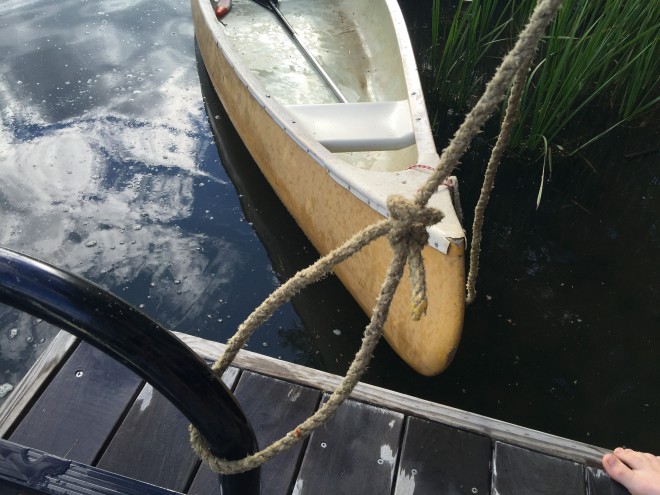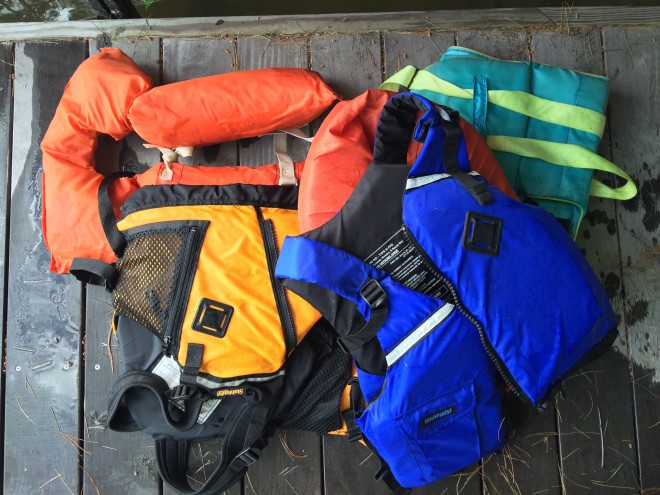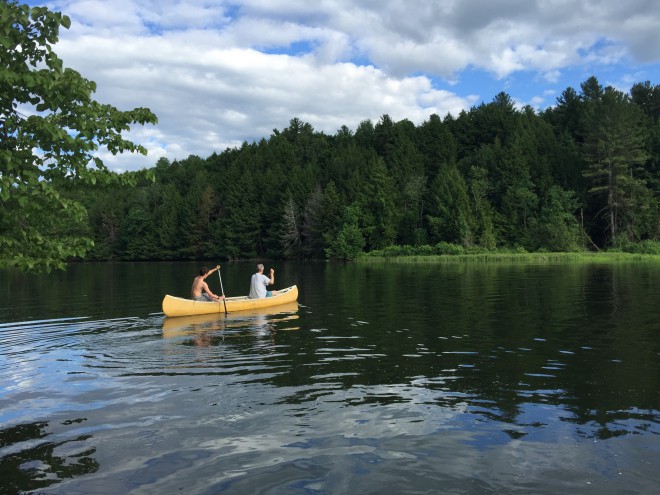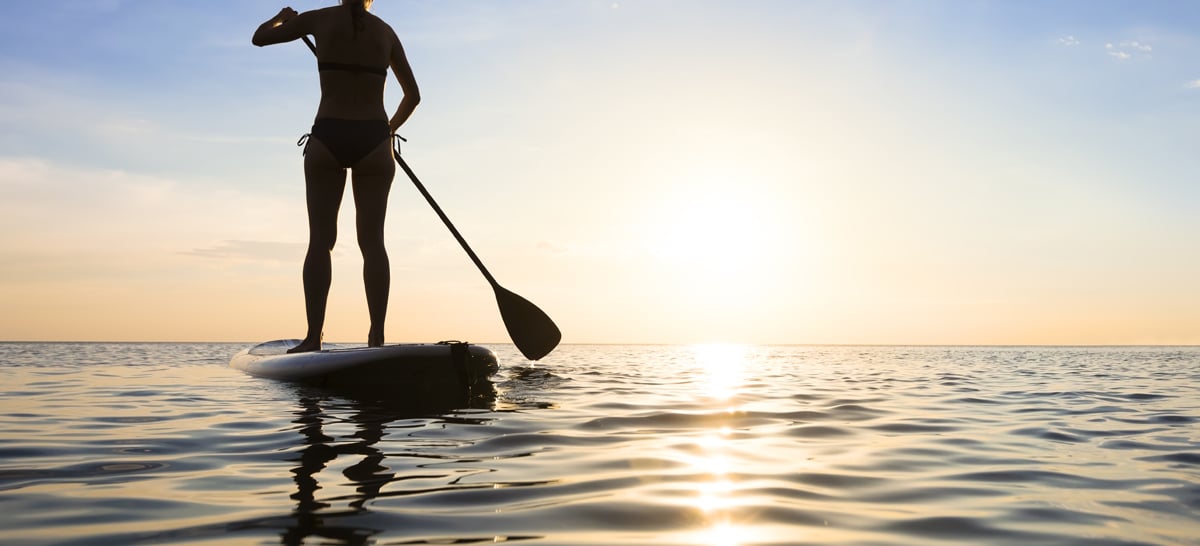
What I learned growing up was that knowing how to use a canoe would open up my outdoor world to new experiences of all kinds. So here are a few basic canoeing tips:
One: Balance, Balance, Balance
If there is one trick anyone needs to learn to enjoy a canoe, it's how to enter, exit and sit in a canoe with out going that-over-tea-kettle over the side of the canoe and directly into the drink. It's completely hilarious to all of the dry people watching you from shore, but it's not quite as fun when it's you... wink!
Learning how to position your first foot directly into the middle of the canoe, and shift your weight with your arms to grasp the sides of the canoe while getting your second leg inside is a shaky feat. However, it can be done -- and you can have assistance from a steady friend's arm for the first few times.
Once seated inside the canoe, the key is to remain as directly in the center of the canoe as possible and avoid any unpredictable leaning or jerking to one side or the other. Or it's back in the water for you and possibly more applause from your buddies on shore.
Two: Learn Your Strokes
The front seat of the canoe is the position of power. That is, it's for creating the forward momentum power for the canoe with your strong, steady strokes. In this seat, you're also the spotter of giant rocks or other sneaky formations that can come up like "land-ho!" the bottom of riverbeds.
While this person is paddling away, the person in the back is paddling and steering the canoe, using the paddle as a rudder and hopefully keeping the boat in as straight a line as possible toward the desired destination. The well-known stroke that is used by canoe-purists to steer is called the "J-Stroke," which is done with a twist of the wrist to the inside at the back-end of the stroke. It sounds complicated but becomes second nature once you've mastered it.
Three: Gear -- The Must Haves
The gear must haves are these: a reliable canoe that, yup, floats, two paddles that also float, life jackets for everyone on board, and a secure line on one end of the canoe to tie it up safely. If you're doing more than tootling around in the pond, then bringing a preferably "waterproof" dry-bag is for essentials like a first aid kit and electronics is important.

Four: Gear -- The Extras
There are so many extras because the point of the canoe is usually as a vessel to bring you towards adventure. So it's fun to throw in the binoculars for bird-watching, some lunch and more snacks, a waterproof camera for those epic water-shots, and possibly the most vital extra, bug repellent. Where there is water, there are bugs. Don't forget the bug stuff or you'll possibly become a delicious festivus of chomping for all varieties of hungry bugs.
Five: Create Your Own Adventure
And, finally, what I love about canoeing is you can completely make your own adventure once you learn the basic skills to maneuver the canoe safely. It is freedom in a 16 foot, skinny bucket on the water.

You can silently skim next to the shore during dusk looking for animals who've come to drink. You can use the canoe as a vessel to get you to the middle of the lake to jump out of and swim around. (Huge skill is required to get back into the canoe afterwards without tipping out everyone and everything inside, but it's possible, we grew up doing it!) You can throw in a fishing line or tackle the river's rapids -- expertise required. You can paddle to a favorite swimming hole for a picnic, or, lastly and an old favorite, you can go on a camping expedition using a canoe to cart your gear and follow the waterways.
Today, we still have that beat up, old, yellow canoe. It's a family gem and my dad still throws it into the water every single summer, filled with grandkids now and loads and loads more "extras." And my heart bursts with pride as my dad teaches my son how to master the J-Stroke and they glide around the river as a team. Another generation of adventurers taking on the world in a canoe. Can't get better than that.
Have any canoeing tips to add from your own experiences? Happy paddling.

*Photos courtesy Annie Yearout.




